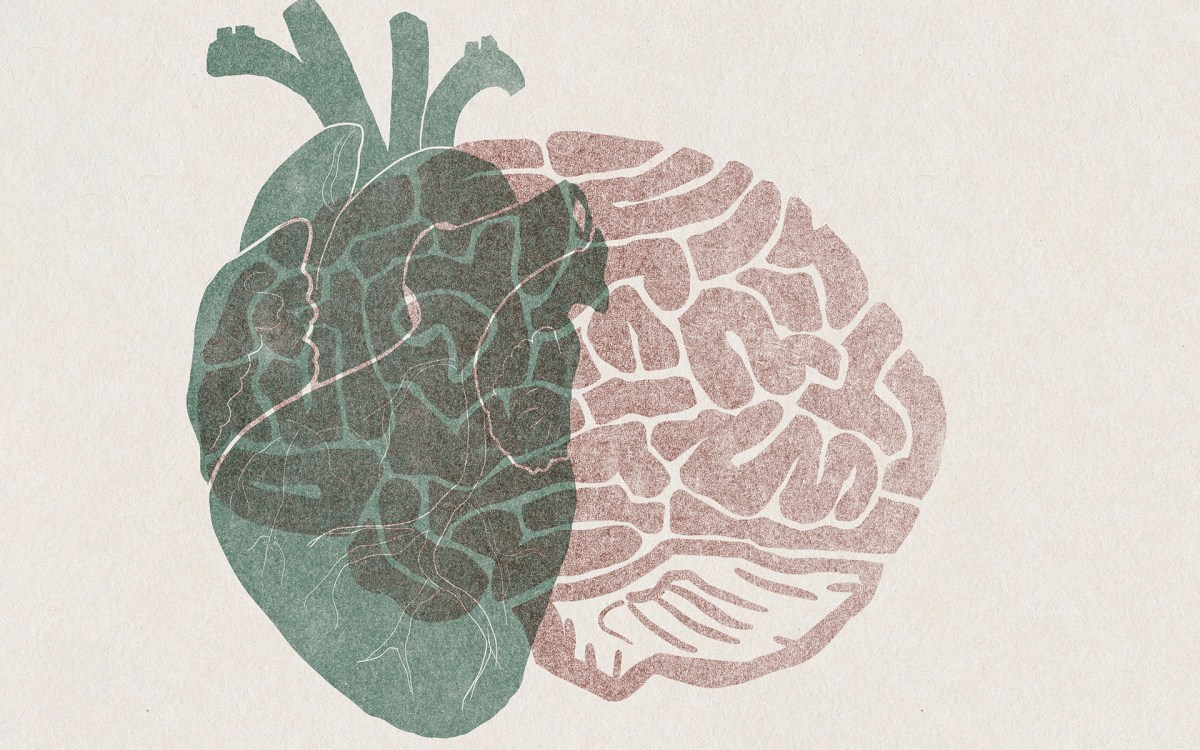You went to the doctor and came out feeling worse

“If we use the term ‘gaslighting’ when intent is absent, we’re missing the opportunity for compassion for providers,” says psychologist Alexandra Fuss.
Photo by Dylan Goodman
Psychologist who studied ‘medical gaslighting’ explains how caseload pressures contribute to the problem and when we should call it something else
Patients struggling with hard-to-detect conditions, such as long COVID, or with symptoms whose causes modern medical testing has trouble pinning down, such as irritable bowel syndrome, can feel dismissed when a doctor says they can’t find a cause for the ailment, or — worse — when they suggest that the condition may be all in the patient’s head. This is commonly known as “medical gaslighting,” a problem that is hardly new but which social media has amplified in recent years.
Alexandra Fuss, director of behavioral medicine in inflammatory bowel disease at Mass General and an instructor in psychology at Harvard Medical School, teamed with colleagues from the University of Michigan and the North Carolina-based Rome Foundation Research Institute to explore the issue for an article published in the journal Translational Gastroenterology and Hepatology.
In this edited interview, Fuss highlights the authors’ conclusion that most cases of medical gaslighting do not include an intent to deceive and should be called something else: “medical invalidation.” She also speaks to how growing caseload and paperwork pressures on doctors might be contributing to the problem.
How did the issue of “medical gaslighting” get your attention?
The term has blown up on social media, and, as a psychologist, I hear about it in sessions with patients.
Is there some medical hubris involved, when a provider can’t find a concrete reason for symptoms, so believes there isn’t one?
That’s part of it, and connects back to some thinking, “If it’s not something I’m seeing on a medical test, it’s probably psychological.” But we have to recognize that there’s also huge pressure on all healthcare professionals, especially M.D.s, to be experts, have answers, and to know everything. It can be difficult to say, “I don’t know.” But there’s so much room for growth if you say, “I’m not sure, but I’m going to work with you and we’ll figure it out together.”
You question whether “gaslighting” is the right term. Why?
There’s a lot of debate in the literature about the role of intent in gaslighting. Some authors say there has to be intent — to make somebody question their lived reality and defer to the perpetrator’s point of view — in order to have gaslighting. Others say it’s not about intent, it’s about the end results, and that whenever there’s a power differential, there’s potential for gaslighting.
We believe intent is key for true gaslighting. Whether consciously or subconsciously, I want you to see things my way and I’m going to question your experiences and throw you off of equilibrium so that you do.
If we use the term “gaslighting” when intent is absent, we’re missing the opportunity for compassion for providers. The vast majority have no intent to harm anybody. They are doing their absolute best to be healers and helpers. But sometimes there is “medically invalidating” behavior. It’s not intentional, but it’s still invalidating and it’s still harmful. And saying, “OK, this was invalidating,” rather than “gaslighting,” opens the door to asking, “How can we repair these relationships? How can we prevent this from happening?”
Can you talk more about how pressure on doctors might contribute to the problem?
These pressures start with hospital and organizational-level leaders who set the policies that ultimately impact the physicians working within these systems. Physicians are consistently pressured on productivity, to see as many patients as possible and often in as little time as possible. Also, studies show physicians are devoting upwards of 50 percent of their day to documentation, typically spending time outside of work to get everything done. They have to be stewards of healthcare resources and make sure patients aren’t getting unnecessary, expensive tests, and that resources are being used on the right people. There’s pressure all around them. It’s not surprising then that burnout rates are so high, affecting over half of physicians in practice. While it’s certainly helpful for providers to have skills in work/life balance, it’s unfair to say that this is completely on them and ignore the impact of the system they work within. Changes starting at the top can make a much bigger impact.
How does that pressure affect interactions with patients?
It leads to vulnerabilities for invalidation to happen. If, let’s say, a doctor has a heavy caseload that day and only 15 minutes for a visit with a patient and the patient takes the majority of the time talking, that doesn’t leave a lot of time for the provider to ask, “How are you doing with this?” Or to make those empathic statements that build trust: “I believe you, tell me more about what’s going on.” Without the time and space for the doctor to explain things, the patient is left filling in the blanks, which might look like, “Oh, my doctor is washing their hands of me” or “They waved me off.” If some of that pressure wasn’t there, these situations could be avoided.





